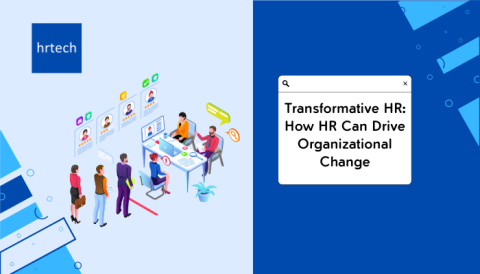Get ready to uncover the power of employee training – the not-so-secret ingredient for propelling your business to new heights. Let’s explore the incredible power of training and how it can propel your business forward.
Employee training and development programs are the cornerstone of organizational success and growth. These initiatives are meticulously crafted to elevate the skills, knowledge, and competencies of employees, empowering them to excel in their roles and drive the collective prosperity of the company. In the dynamic landscape of modern business, the synergy between training and development is pivotal – training hones specific skills and knowledge, while development cultivates comprehensive personal and professional growth.
Impact Of Effective Employee Training On Business Growth:
As HR professionals, embracing and championing these programs is not just a strategic imperative, but a transformative investment in exploring the full potential of your workforce and propelling your organization towards unparalleled achievement.
Before we dive deeper, let’s get our definitions straight and understand how employee training fits within the broader Learning & Development spectrum.
Definition and Differentiation from Learning & Development (L&D):

Employee training and development programs are often used interchangeably with Learning & Development (L&D), but there is a subtle difference between the two. While employee training is centered around improving job-specific skills and knowledge, L&D encompasses a broader scope, including personal and professional growth, leadership development, and career planning. Employee training is a subset of L&D, focusing on the immediate needs of employees to perform their job responsibilities effectively.
Importance of Aligning Training Goals with Business Objectives:
Now that we’ve nailed down the definitions, let’s talk about why aligning training goals with business objectives is a game-changer for real impact.
To maximize the impact of employee training and development programs, it is crucial to align the training goals with the business objectives of the organization. When the training goals are directly linked to the strategic goals and priorities of the company, employees become more engaged and motivated to acquire the necessary skills. Moreover, aligning training with business objectives ensures that the training investment is directed towards areas that drive business growth and success.
“See how hrtech’s Marketplace solutions are aligning businesses in the UAE and Saudi Arabia with their strategic training objectives for enhanced growth.”
Benefits of a Comprehensive Employee Training and Development Program:
Implementing a comprehensive employee training and development program offers numerous benefits to both employees and the organization as a whole. Firstly, it enhances the skills and knowledge of employees, enabling them to perform their job responsibilities more effectively and efficiently. This, in turn, leads to increased productivity, improved quality of work, and better customer satisfaction.
Secondly, it boosts employee morale and engagement, as employees feel valued and supported by the organization’s investment in their development. Lastly, a robust training program helps attract and retain top talent, as employees are more likely to stay with an organization that offers opportunities for growth and development.
Now that we’ve talked about the benefits, let’s see how aligning these programs with your business goals can really turbocharge your growth.
Aligning Training and Development Goals with Business Objectives:
To ensure that employee development aligns with business objectives, it is essential to equip employees with skills that support business growth. This requires careful planning and coordination between HR professionals, managers, and other stakeholders. Here are some steps to integrate employee development with company priorities:
Identify the key competencies and skills required to achieve the organization’s strategic goals.
Assess the current skills and competencies of employees to identify gaps.
Develop a training and development plan that addresses these gaps and aligns with the organization’s objectives.
Implement the training program, providing employees with opportunities to acquire the necessary skills through various training methods.
Continuously evaluate the effectiveness of the training program and make adjustments as needed to ensure alignment with evolving business needs.
By aligning training and development goals with business objectives, organizations can ensure that employee development efforts directly contribute to the overall success and growth of the company.
Each employee’s journey is unique, and so should their training. Let’s check out the buffet of training options available.
Understanding Different Types of Employee Training and Development Programs:

Employee training and development programs come in various forms, each serving a specific purpose in enhancing employee skills and knowledge. Here are some common types of employee training and development programs:
New employee training (Onboarding): This type of training is designed to help new hires become familiar with their roles, the company’s policies and procedures, and the overall organizational culture.
Compliance training: Compliance training ensures that employees understand and adhere to legal and regulatory requirements relevant to their roles, such as safety regulations, data protection laws, and ethical guidelines.
Customer service training: This type of training equips employees with the skills and knowledge to provide exceptional customer service, including effective communication, problem-solving, and conflict resolution.
Sales training: Sales training focuses on enhancing the selling skills of employees, including product knowledge, negotiation techniques, and customer relationship management.
Manager training: Manager training aims to develop the leadership and managerial skills of employees in supervisory or managerial roles, including effective communication, team management, and performance evaluation.
Technical training: Technical training provides employees with the knowledge and skills required to use specific tools, software, or equipment necessary for their roles.
Soft skills training: Soft skills training focuses on developing interpersonal skills, such as communication, teamwork, time management, and emotional intelligence.
Products and services knowledge: This training ensures that employees have a comprehensive understanding of the organization’s products and services, enabling them to effectively promote and support them.
Leadership training: Leadership training programs are designed to develop the leadership capabilities of employees, preparing them for future leadership roles within the organization.
Safety training: Safety training is essential to ensure that employees are aware of and can follow proper safety protocols to prevent accidents and injuries in the workplace.
By offering a diverse range of training and development programs, organizations can cater to the specific needs of their employees and enhance their overall performance and effectiveness.
Find tailored programs for every training need on hrtech, your single-source HR technology marketplace.
Employee Training and Development Methods:
Employee training and development can be delivered through various methods, depending on the nature of the training and the preferences of the organization. Here are some common methods used in employee training and development:
Instructor-led Training: This traditional method involves a trainer delivering the training content in a classroom or workshop setting. It allows for direct interaction and feedback from the trainer.
eLearning: eLearning refers to online training courses or modules that employees can access at their convenience. It offers flexibility and scalability, allowing employees to learn at their own pace.
Simulation: Simulation training involves creating virtual or realistic scenarios that mimic real-life situations employees may encounter in their roles. It allows for hands-on practice and skill development in a safe environment.
Mentoring and Coaching: Mentoring and coaching programs pair employees with experienced professionals who provide guidance, support, and feedback to enhance their skills and knowledge.
Cross-training: Cross-training involves exposing employees to different roles or departments within the organization to broaden their skills and knowledge. It promotes versatility and flexibility among employees.
On-the-Job Training (OJT): OJT involves learning while performing job tasks under the guidance of a more experienced employee. It provides hands-on experience and immediate application of knowledge.
Lectures: Lectures are informative sessions where a subject matter expert delivers information or instructions to a group of employees. It is useful for conveying theoretical knowledge and concepts.
Group Activities: Group activities encourage collaboration and teamwork among employees. They can include group projects, case studies, or problem-solving exercises.
Role-playing: Role-playing allows employees to practice and refine their skills in a simulated scenario. It is particularly useful for developing communication, negotiation, and conflict-resolution skills.
By utilizing a combination of these training methods, organizations can create a dynamic and engaging learning experience for their employees.
Best Practices for Designing Effective Training and Development Programs
Designing an effective training and development program requires careful planning and consideration of the unique needs of the organization and its employees. Here are some best practices to ensure the success of these programs:
Avoid fast-tracking the training process: Rushing through the training process can lead to a shallow understanding of the content. Allow employees sufficient time to absorb and apply the knowledge and skills acquired.
Consider the forgetting curve and provide continuous support: People tend to forget information over time. To combat this, provide continuous support and reinforcement through follow-up sessions, refresher courses, or job aids to ensure long-term retention of knowledge.
Ensure a personalized and flexible learning experience: Tailor the training program to meet the individual needs and learning styles of employees. Provide opportunities for self-paced learning, customization of content, and feedback to enhance engagement and effectiveness.
Update and adjust the program based on feedback and changing business needs: Regularly gather feedback from participants to identify areas for improvement. Consider changes in business objectives, technology, or industry trends that may necessitate updates to the training program.
By following these best practices, organizations can design training and development programs that effectively meet the needs of employees and contribute to their professional growth and the overall success of the business.
Alright, we’ve laid down the blueprint for designing solid programs. Now, let’s get our hands dirty by digging into the nitty-gritty: training techniques that work.
Employee Training Techniques:
Effective employee training techniques can significantly impact the success of training and development programs. Here are some commonly used techniques and their pros and cons:
On-the-Job Training: Ideal for practical learning, this method saves costs and offers customized experiences. However, it may be less effective for those who prefer structured guidance.
eLearning: This flexible option uses interactive modules for improved retention but requires reliable internet access and may not suit hands-on skill training.
Instructor-Led Training: Provides immediate feedback and personal interaction, yet may not be cost-effective or suitable for remote employees.
Simulation and Role-Playing: These immersive techniques foster critical thinking but may incur higher costs and require regular content updates.
Coaching and Mentoring: Builds strong relationships and offers personalized guidance, though it demands a significant time investment from both parties.
Collaborative Training: Enhances knowledge retention and supports a learning culture, but coordinating schedules can be challenging.
Blended Learning: Combines online and face-to-face elements to offer a comprehensive experience, requiring effective time management from learners.
Microlearning and Spaced Learning: These methods fit into busy schedules and combat the forgetting curve, yet may not cover complex topics in depth.
Gamification and Mobile Learning: Engage employees through familiar technology and interactive elements, though complex subjects may be better suited to other formats.
By selecting the appropriate training techniques based on the specific learning objectives and context, organizations can optimize the effectiveness of their training and development programs.
Technological Tools for Training and Development Programs
Technological tools play a vital role in enhancing the efficiency and effectiveness of employee training and development programs. Here are some commonly used tools in this domain:
Learning Management Systems (LMS): LMS platforms provide a centralized hub for managing, delivering, and tracking training content. They enable organizations to offer online courses, track employee progress, and generate reports on training outcomes.
Learning Experience Portals (LXP): LXPs offer a personalized and learner-centric approach to training and development. They provide access to a wide range of learning resources, including courses, videos, articles, and forums, tailored to individual needs.
Project Management Tools: Project management tools help organizations plan, execute, and track training projects. They facilitate collaboration, task management, and resource allocation, ensuring smooth implementation of training programs.
Video Training Tools: Video training tools enable the creation and delivery of interactive video content for training purposes. They enhance engagement and retention through visual storytelling and interactive elements.
Microlearning Platforms: Microlearning platforms deliver short, bite-sized training modules that focus on specific learning objectives. They promote just-in-time learning and are ideal for on-the-go training.
In-app Training Tools: In-app training tools integrate training content directly into existing software applications or tools used by employees. This provides seamless access to training resources within the context of their daily work.
By leveraging these technological tools, organizations can streamline the delivery of training content, enhance learner engagement, and track the effectiveness of their training and development programs.
After all is said and done, let’s circle back and see if our training efforts are paying off. How do we do that? Read on.
Evaluating Training Program Effectiveness and ROI
Evaluating the effectiveness of training programs is crucial to ensure continuous improvement and justify the investment in employee development. Here are some key considerations for evaluating training program effectiveness and return on investment (ROI):
Updating training materials and assessing program efficacy: Regularly review and update training materials to ensure they remain relevant and aligned with evolving business goals. Evaluate the impact of training programs through assessments, quizzes, surveys, and performance evaluations.
Aligning training outcomes with evolving business goals: As the organization’s goals and priorities change, assess how training outcomes contribute to these changes. Measure the impact of training on key performance indicators (KPIs) such as productivity, customer satisfaction, and employee retention.
Securing C-suite buy-in and commitment for sustained training efforts: Gain support from senior leadership by presenting the tangible benefits and ROI of training programs. Communicate the positive impact of training on business growth, employee engagement, and talent acquisition and retention.
By evaluating training program effectiveness and aligning the outcomes with business goals, organizations can continuously improve their training and development initiatives, ensuring they remain effective and contribute to the organization’s overall success.
Transforming HR through Agile Workforce Solutions
Conclusion:
Effective employee training and development programs are essential for driving business growth and success. By aligning training goals with business objectives, organizations can equip employees with the skills and knowledge needed to contribute to the achievement of strategic goals. We’ve covered a lot of ground, from the nuts and bolts of designing a training program to evaluating its success. Remember, investing in your team is investing in your business’s future. Now, go forth and train!
For those seeking deeper insights and further discussion on the intersection of employee training programs and business growth strategies, we invite you to explore hrtech company blog insights. Empower your HR team with hrtech’s marketplace, ensuring your organization stays ahead with the most effective employee training and development solutions. Schedule a Call Now!





